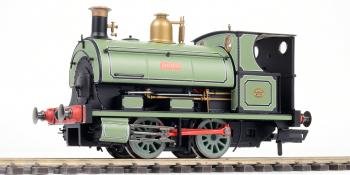The amalgamation of two of the bestknown names in British model railways brought the Hornby range to a new and much wider audience, as EVAN GREEN-HUGHES explains.
PRIOR TO THE TAKEOVER, Hornby Dublo trains had always been considered to be, both by their manufacturer and by their customers, far superior to the plastic versions produced by Tri-ang Railways. Being much more expensive than their competitor they tended to be owned by more affluent children, and there were many Tri-ang owners who made no secret of the fact that they would have liked to own a Hornby Dublo trainset instead.
Tri-ang was, however, the country’s brand leader and was selling more trains than anyone else. Unlike Hornby Dublo it had invested heavily in the latest production techniques and this served to keep costs down. Hornby Dublo on the other hand was by this time using out of date technology to produce die-cast metal trains, and was still using standards that were beginning to look a little old fashioned. This a problem wasn’t just related to the railway range for the company’s staple product Meccano was then being overtaken by more modern and much cheaper assembly systems such as Lego and the Airfix Betta Bilda range.
Bringing…





